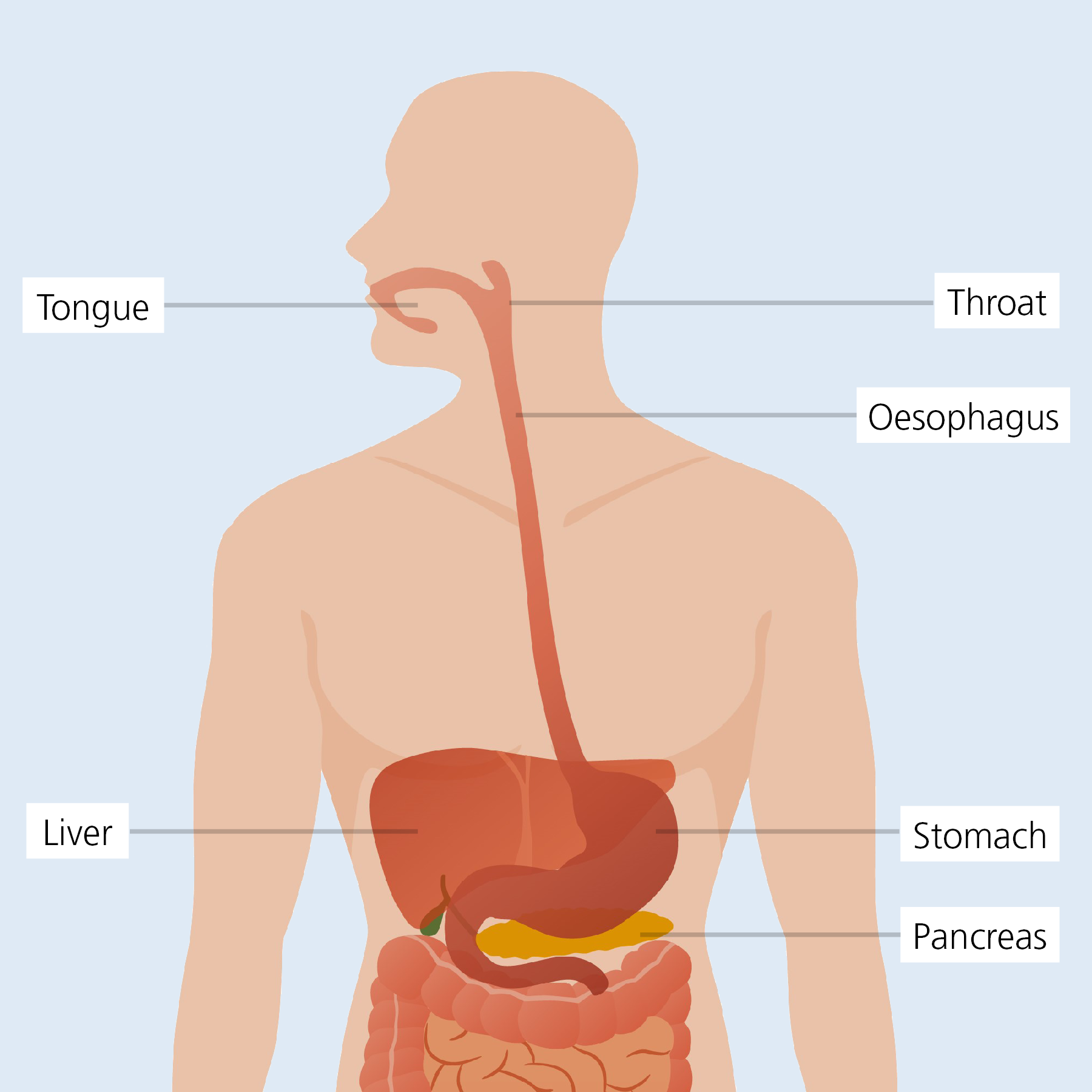SWALLOWING DIFFICULTIES:
EOSINOPHILIC OESOPHAGITIS?
INFORMATION FOR PEOPLE WITH THE CONDITION



What is eosinophilic oesophagitis?
Eosinophilic oesophagitis (EoE) is a chronic inflammatory disease of the oesophagus. The origin and cause of the disease are not yet completely understood. The word oesophagitis is a combination of “oesophagus,” the technical term for the gullet, and the suffix “-itis,” which is used in medicine to denote inflammation. This inflammation of the oesophagus is characterised by the infiltration of what are known as eosinophilic granulocytes (particular types of white blood cells) into the mucous membrane, which is why the disease is called eosinophilic oesophagitis.
Brief description
Typical symptoms in adults:
- Swallowing difficulties – including food getting lodged in the oesophagus (technical term: food bolus obstruction/food bolus impaction) in individual cases
- Pain when swallowing
- Development of avoidance strategies when eating: eating extremely slowly due to chewing very small bites for a long time and drinking frequently to alleviate swallowing difficulties; puréeing of food; avoiding certain foods; reducing or avoiding restaurant visits
Only described as an independent disease in 1993, eosinophilic oesophagitis (EoE) is considered to be a “young,” relatively new disease and has only been a point of increasing focus in medicine since the 2000s.
The oesophagus is about 25 cm long and, when healthy, has a diameter of about 2.5 cm. It connects the oral cavity to the stomach and is responsible for transporting food from the throat to the stomach. As a result, the oesophagus comes into contact with any food that is ingested.

In EoE patients, certain allergens (substances that cause allergic reactions) contained in food are suspected of causing inflammation in the oesophagus. At a cellular level, there are a number of similarities between this inflammatory reaction and the respiratory disease asthma, which is caused by allergens in the air. This is why EoE is often also referred to as “asthma of the oesophagus”. There are also indications that, in addition to food allergens, airborne allergens may also be responsible for EoE. It is not uncommon for EoE patients to suffer from other allergic diseases such as hay fever, asthma, skin rashes and/or certain other food allergies. However, it is still completely unclear how eosinophilic oesophagitis is linked to these diseases, as its exact causes and processes have not yet been fully researched.
Certain allergens (substances that cause allergic reactions) contained in food are suspected of causing inflammation in the oesophagus of EoE patients, including, in particular, dairy products (≥ 50 %), wheat (≥ 50 %), soy/legumes, eggs, nuts and fish/seafood.
How frequently does eosinophilic oesophagitis occur?
EoE was only recognised as an independent disease in 1993 and is a rare disease (orphan disease). It is currently the second most common inflammatory disease of the oesophagus, after gastro-oesophageal reflux disease (GORD).
Across Europe, an average of 29 in 100,000 people are affected, but there are major geographical differences. Approximately 80 % of EoE patients are male. EoE can occur at any age, but the majority of patients are diagnosed between 30 and 50 years of age.


